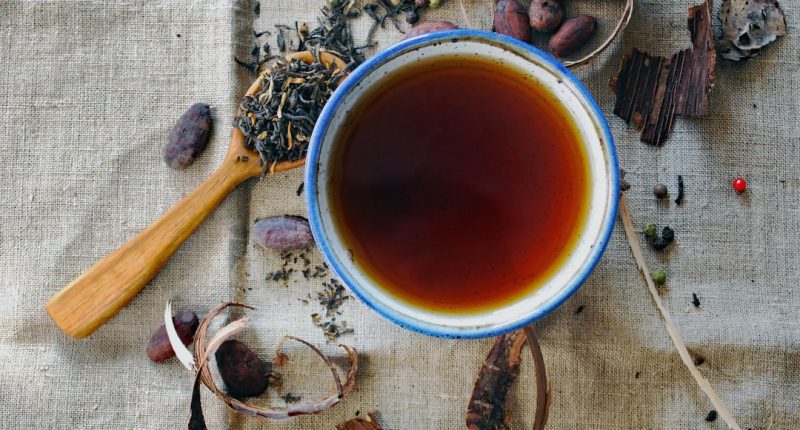Are you on a quest for that perfect cuppa to help shed those extra pounds? Enter slim tea – the latest craze in the world of weight loss. With its promises of shedding fat, boosting metabolism, and promoting overall well-being, it’s no wonder this herbal elixir has caught the attention of health enthusiasts worldwide.
But here’s the burning question: Is this seemingly miraculous beverage really worth all the hype? In this blog post, we’ll dive deep into the benefits and drawbacks of slim tea, separating fact from fiction so you can make an informed decision about whether to hop on board this trendy bandwagon.
So grab your favorite mug, settle in with a cozy blanket, and let’s spill the tea on everything you need to know about slim tea! Whether you’re a skeptic or an avid believer in its potential wonders – get ready for some eye-opening revelations ahead. Let’s brew up some knowledge together!
What is Slim Tea?
Slim tea, also known as a weight loss tea or detox tea, is a specially formulated herbal infusion designed to aid in weight management and promote overall well-being. Unlike your regular cup of chamomile or green tea, slim tea blends are typically infused with a combination of herbs, spices, and other natural ingredients that claim to have fat-burning properties.
These teas often contain ingredients such as green tea extract, Garcinia Cambogia, ginger root, dandelion leaf, and many others. Each ingredient supposedly plays a role in boosting metabolism, suppressing appetite, detoxifying the body, or enhancing digestion – all factors believed to contribute to weight loss.
The idea behind slim tea is not just about sipping on a warm beverage; it’s about harnessing the power of nature’s bounty to assist you on your journey towards shedding those stubborn pounds. Supporters rave about its ability to kickstart their weight loss endeavors while enjoying the soothing ritual of savoring a delicious cuppa.
However pleasant this may sound though; it’s essential to approach slim tea with realistic expectations. While it can be an excellent addition to a healthy lifestyle that includes exercise and proper nutrition – don’t expect miracles overnight. Slimming teas should never replace balanced meals nor serve as an excuse for skipping workouts.
So before you embark on your slimming adventure armed with teabags galore – let’s explore both the pros and cons so you can make an informed decision about whether slim tea is truly worth incorporating into your routine!
Read Also: Natural Ways To Nourish Your Way to Radiant Skin: Top 5 Foods for a Healthy Glowing Skin
The Different Types of Slim Tea
The world of slim tea is vast and varied, with a multitude of options to suit every taste and preference. From traditional blends to herbal infusions, there’s no shortage of choices when it comes to finding the perfect slim tea for you.
One popular type of slim tea is green tea. Packed with antioxidants and known for its metabolism-boosting properties, green tea has long been hailed as a weight loss aid. Its subtle flavor makes it easy to incorporate into your daily routine.
Another option is oolong tea, which falls somewhere between black and green tea in terms of oxidation. Oolong teas are known for their ability to increase fat burning and reduce body weight. With a slightly fruity or floral taste, they offer a pleasant alternative to other types of slim teas.
For those who prefer an herbal approach, there are various options available as well. Popular herbs used in slim teas include dandelion, ginger, and peppermint. These natural ingredients not only provide potential weight loss benefits but also offer digestive support and overall wellness.
It’s worth noting that while slim teas can provide certain benefits, they’re not magic potions that will instantly shed pounds. To see real results, it’s important to combine them with a healthy diet and regular exercise routine.
Read Also: Healthy Habits For Weight Loss
Pros and Cons of Slim Tea
When it comes to slimming down, many people turn to various methods and products to aid their weight loss journey. One popular option is slim tea, a type of herbal tea that claims to help boost metabolism and promote fat burning. However, like any product, there are both pros and cons associated with the use of Slim tea.
One of the main advantages of Slim tea is its natural ingredients. Most types of slim tea are made from herbs such as green tea, oolong tea, or other plant extracts known for their potential health benefits. These ingredients can provide antioxidants and other compounds that may support overall well-being.
Another benefit is the convenience factor. Slim teas come in convenient teabag form or loose-leaf options which can be easily brewed at home or taken on the go. This makes it a convenient choice for those who don’t have time for elaborate weight loss routines or cooking special meals.
Additionally, some users report experiencing increased energy levels and improved digestion after consuming Slim tea regularly. These effects could potentially contribute to weight loss efforts by helping individuals feel more active and aiding in proper nutrient absorption.
Despite these potential benefits, there are also some drawbacks to consider when using slim teas for weight management purposes. While they may assist with temporary water weight reduction due to diuretic properties in certain ingredients like dandelion root or senna leaf, this effect doesn’t necessarily translate into long-term fat loss.
Furthermore, excessive consumption of slim teas can lead to dehydration since they contain natural laxatives that increase bowel movements; moderation is key here.
It’s important to note that individual results may vary greatly with any weight loss product including slim teas so what works for one person might not work for another due to differences in body composition and lifestyle factors.
Also Read: Health Benefits of Papaya
What are the side effects of Slim Tea?
When it comes to slimming teas, many people are curious about potential side effects. While Slim tea is generally considered safe for consumption, it’s important to be aware of possible adverse reactions.
One potential side effect of Slim tea is gastrointestinal discomfort. Some individuals may experience stomach cramps, bloating, or diarrhea after consuming the tea. This could be due to the ingredients in the tea or a sensitivity to certain herbs.
Another side effect that has been reported by some users is dehydration. Slim teas often contain diuretic ingredients such as a dandelion leaf or nettle leaf, which can increase urine production and potentially lead to fluid loss if not properly hydrated.
Additionally, some people may be sensitive to the caffeine content in slim teas. While most slim teas have lower caffeine levels than traditional teas or coffee, those who are particularly sensitive may still experience jitters or trouble sleeping if consumed too close to bedtime.
It’s also worth noting that certain individuals with pre-existing health conditions should exercise caution when using slim tea. For example, pregnant women should avoid taking any kind of weight loss product without consulting their healthcare provider first.
While there are potential side effects associated with slim tea consumption like gastrointestinal discomfort and dehydration for some individuals, it’s essential to remember that everyone reacts differently. It’s always a good idea to consult with a healthcare professional before incorporating any new products into your diet routine
How to make Slim Tea
Making slim tea is a simple process that can be done in the comfort of your own kitchen. Here’s a step-by-step guide to help you brew the perfect cup of slim tea.
First, start by boiling water in a kettle or pot. While waiting for the water to boil, gather your ingredients. You will need one teabag or one teaspoon of loose-leaf slim tea per cup.
Next, place the teabag or loose leaves into a teapot or mug. If using loose leaves, you may want to use an infuser or strainer to prevent any debris from ending up in your drink.
Once the water has reached boiling point, pour it over the teabag or leaves and let it steep for 5-7 minutes. This allows the beneficial compounds in the tea to infuse into the water.
After steeping, remove the teabag or strain out the leaves if necessary. You can add honey, lemon juice, or other natural sweeteners if desired for added flavor.
Sit back and enjoy your homemade slim tea! It’s best consumed warm but can also be served over ice for a refreshing twist.
Remember that consistency is key when incorporating slim tea into your routine. It’s recommended to drink a cup before meals as part of a balanced diet and healthy lifestyle.
Conclusion
Overall, Slim Tea is a relatively safe and convenient product that may help promote weight loss in those who use it responsibly. However, it’s important to remember that any weight loss achieved through Slim Tea is likely due to water weight loss rather than
Furthermore, while slim tea can support weight loss efforts when combined with a healthy diet and exercise regimen, it is not a magic solution on its own. Sustainable weight loss requires long-term lifestyle changes.
Whether Slim Overall, Slim Tea is a convenient and easy-to-use product that may promote temporary weight loss. However, it is important to note that any weight loss may be due to water weight rather than actual fat loss. Additionally, long- tea is worth it depending on your individual circumstances and preferences. If you’re seeking an extra boost in your weight loss journey or enjoy herbal teas as part of your routine, trying out slim tea might be worthwhile for you. However, remember that everyone’s experience may vary.
As always when considering dietary supplements or making significant changes to your health routine, consult with a healthcare professional who can provide personalized guidance based on your unique needs and goals.
In conclusion (as mentioned above), make an informed decision about incorporating slim tea into your lifestyle by weighing the pros against the cons and listening to your body’s response. Cheers!







1 comment
Comments are closed.